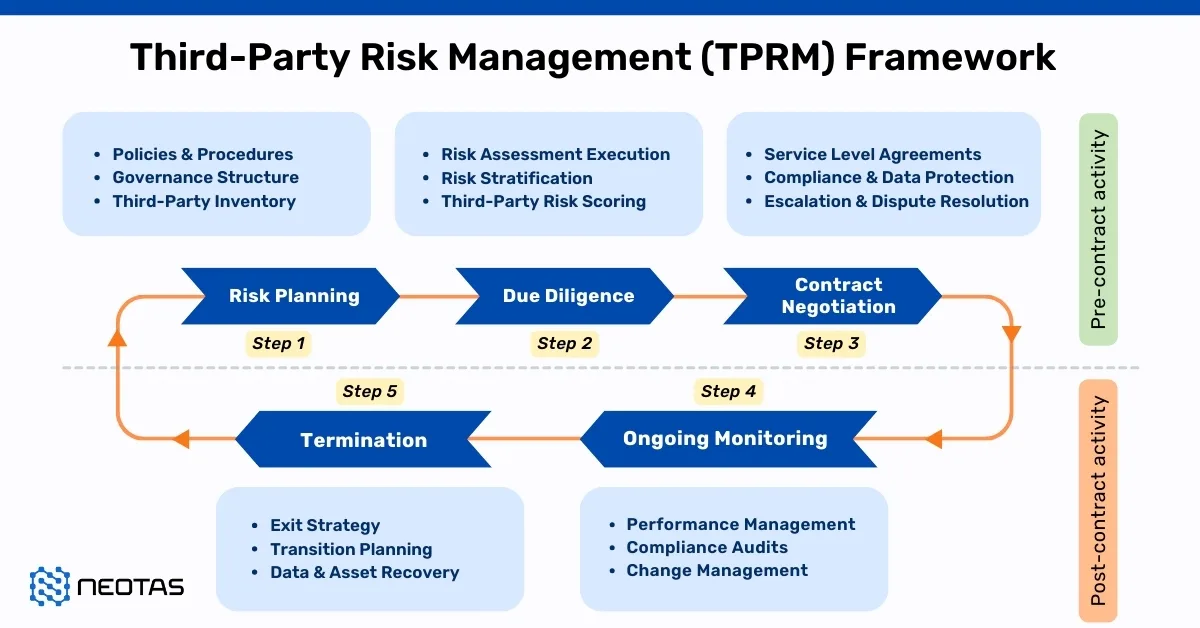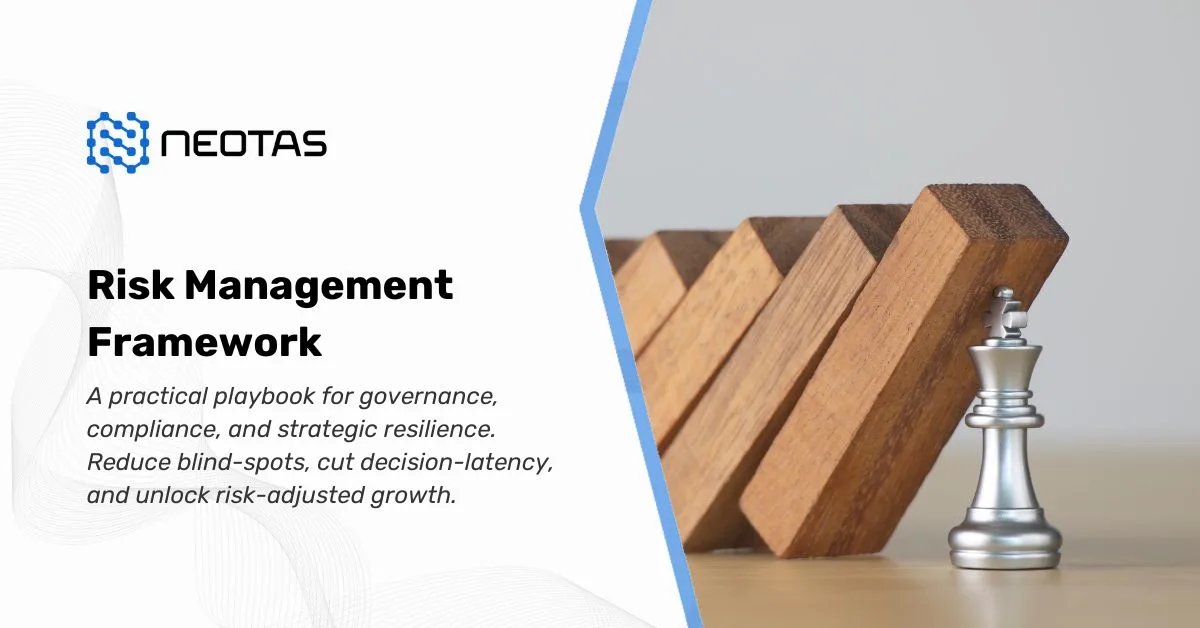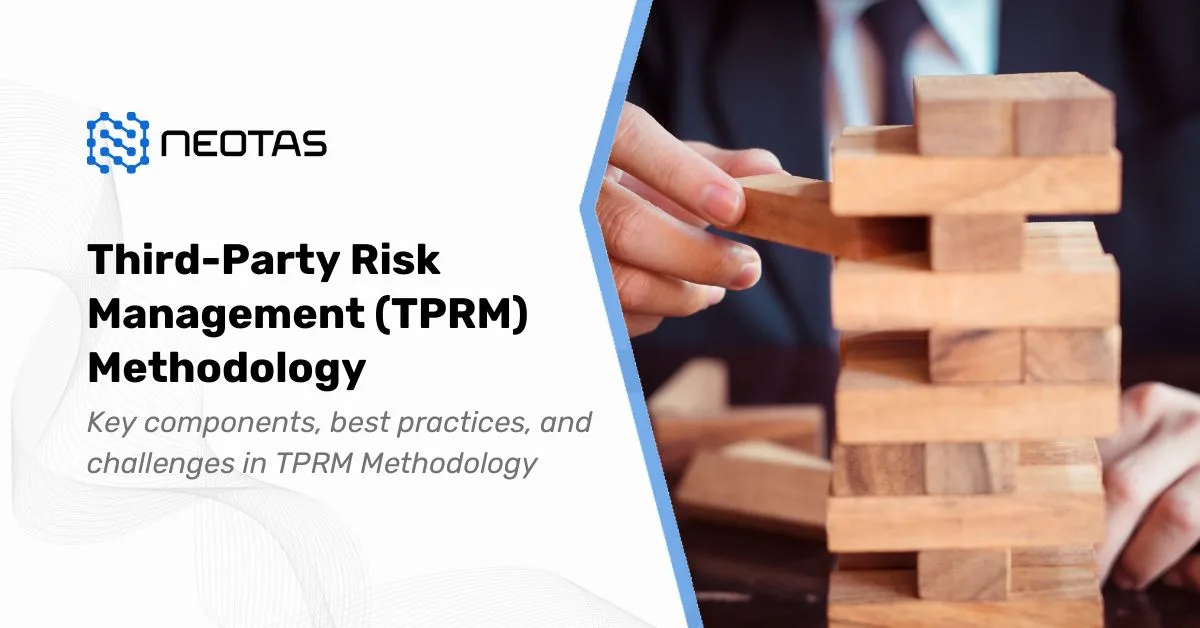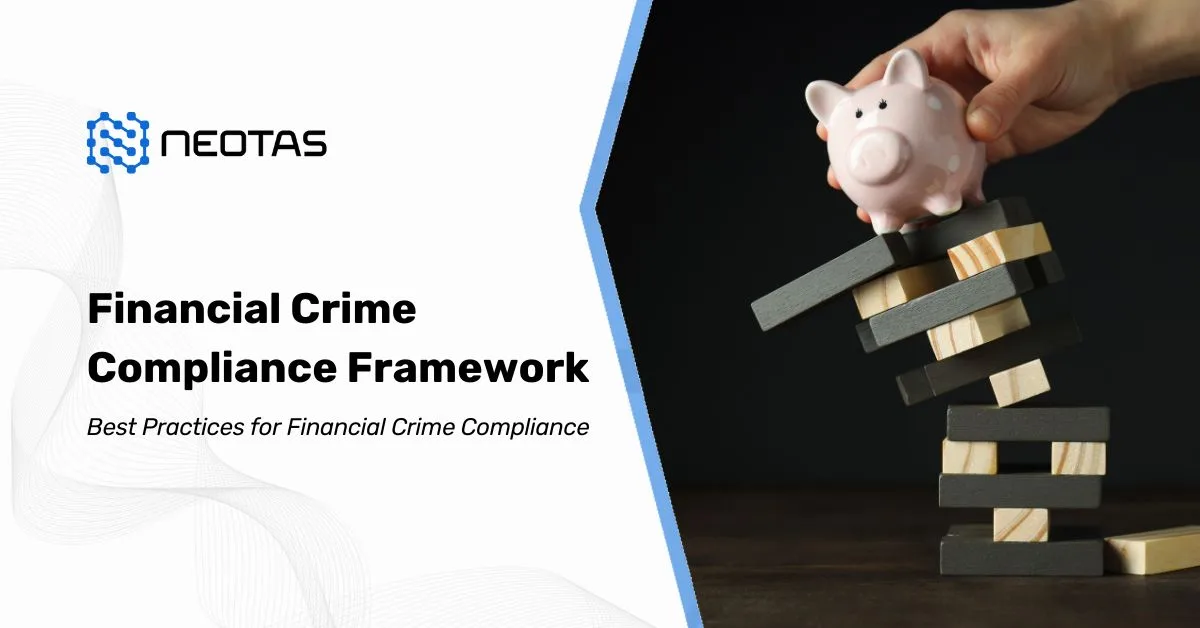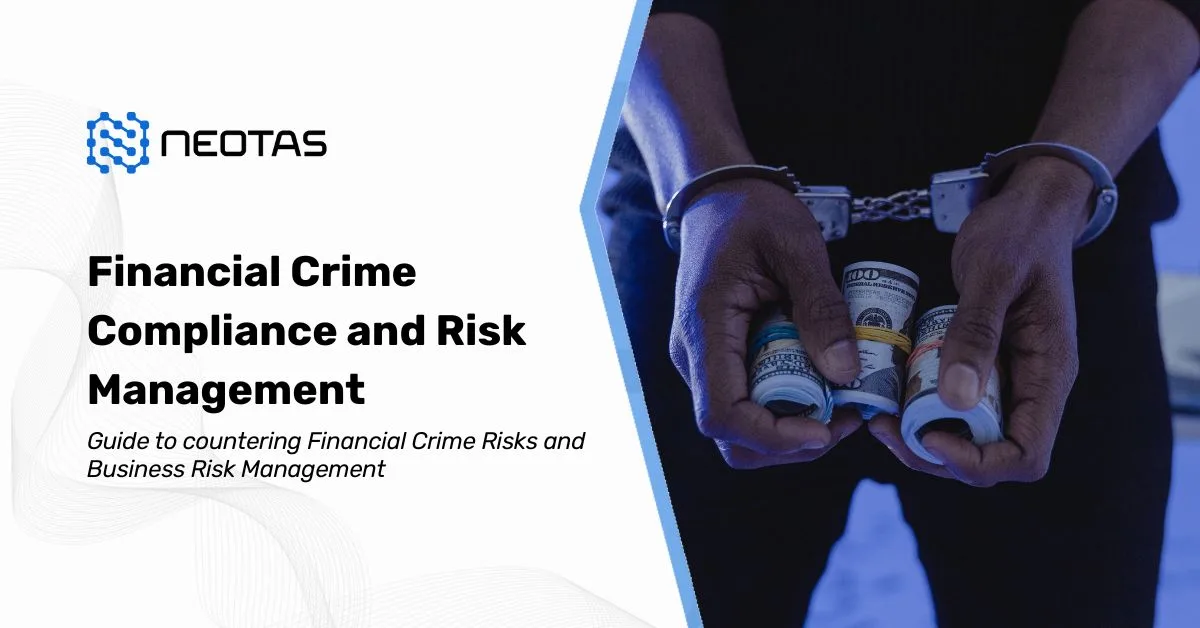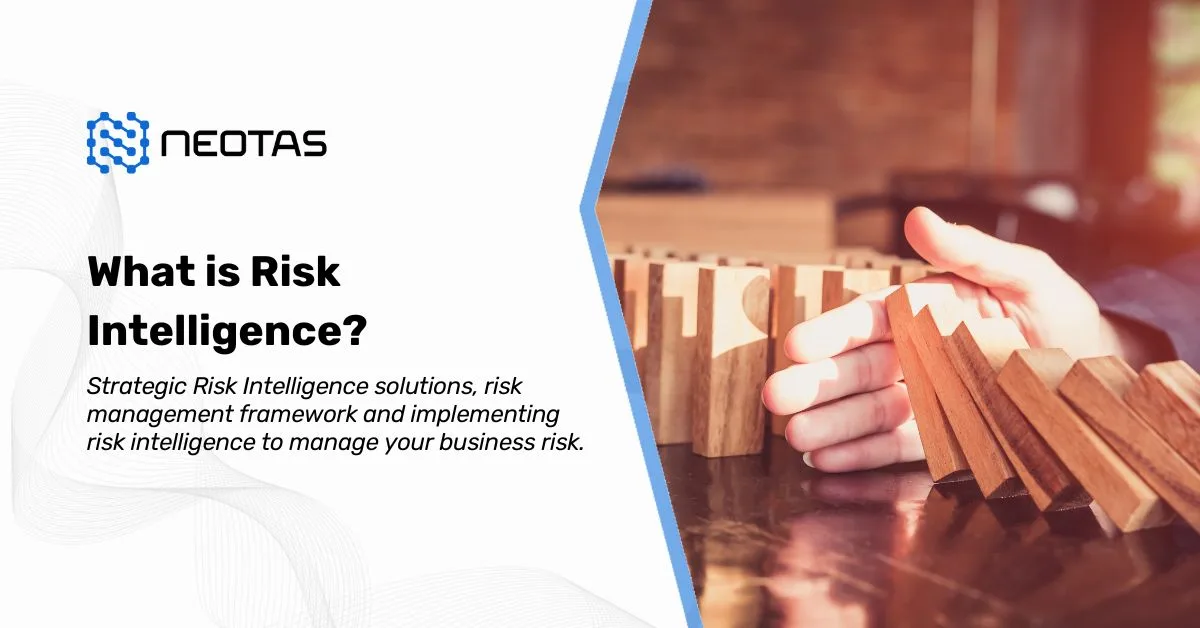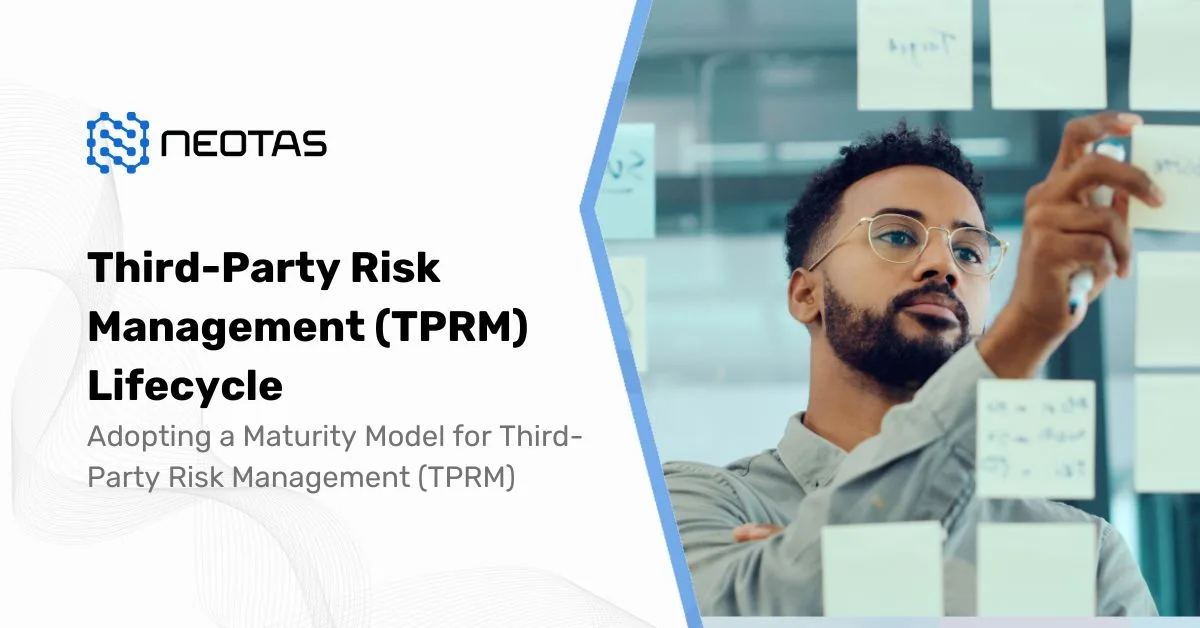OSINT Sources – Using Social Media for OSINT Investigations
OSINT (Open Source Intelligence)
Open Source Intelligence (OSINT) refers to the process of collecting, analysing, and disseminating information from publicly available sources. These sources include everything from traditional media outlets and public records to online forums and social media platforms. Unlike covert intelligence methods, OSINT leverages freely accessible data, making it a non-intrusive and legally compliant way to gather information. This intelligence is invaluable across various sectors, including law enforcement, national security, corporate security, and market research, providing insights without the need for specialised access or covert operations.
Importance of OSINT in Modern Investigations
In the digital age, the sheer volume and variety of available information have transformed how investigations are conducted. OSINT plays a critical role in this transformation by offering several key advantages:
- Cost-Effective: Since OSINT relies on publicly available information, it significantly reduces the costs associated with intelligence gathering. There is no need for expensive surveillance equipment or operations, making it accessible even for smaller organisations.
- Timeliness: Publicly available data, especially from social media, is often disseminated in real-time. This allows investigators to monitor events as they unfold, providing timely insights that can be crucial in dynamic situations such as crisis management or ongoing investigations.
- Breadth of Information: The range of data available through OSINT is vast, covering diverse sources and types of information. This includes everything from demographic statistics and government publications to social media interactions and blog posts. This breadth allows for a more comprehensive understanding of the subject under investigation.
- Transparency and Verification: Because OSINT uses open sources, the information can often be cross-verified with other publicly available data. This transparency helps in validating the authenticity of the information, thereby enhancing the reliability of the intelligence gathered.
- Legal and Ethical: OSINT methods are generally legal and ethical, as they do not involve intrusion into private communications or the use of covert surveillance techniques. This compliance with legal standards makes OSINT a preferred choice for organisations wary of legal repercussions.
Overview of Social Media as a Rich Source for OSINT
Social media platforms have emerged as a particularly rich source for OSINT due to the vast amount of user-generated content they host. Platforms like Facebook, Twitter, LinkedIn, Instagram, YouTube, and Reddit collectively hold immense volumes of data on personal opinions, behaviours, social networks, and real-time events. Here’s why social media is invaluable for OSINT:
- User-Generated Content: Social media platforms are a goldmine of user-generated content, providing insights directly from individuals. This includes everything from personal updates and photos to opinions on current events and public interactions.
- Real-Time Information: One of the standout features of social media is the speed at which information is shared. Users post updates in real-time, making social media an excellent source for up-to-date intelligence on emerging events or situations.
- Network Insights: Social media platforms inherently involve networks of connections. Analysing these networks can reveal relationships and affiliations between individuals and groups, offering deeper insights into social dynamics and influence structures.
- Multimedia Content: Beyond text, social media includes a wealth of multimedia content such as images, videos, and live streams. Analysing this content can provide contextual and visual information that text alone cannot convey.
- Hashtags and Trends: Social media platforms often utilise hashtags and trending topics, which can be useful for identifying and following discussions on specific subjects. This feature allows investigators to monitor public sentiment and emerging issues efficiently.
Purpose of the Social Media OSINT
The primary aim of this guide is to provide a comprehensive and detailed overview of using social media as a source for OSINT investigations. This guide is structured to equip both novice and experienced investigators with the knowledge and tools needed to effectively harness the power of social media for intelligence gathering. By the end of this guide, readers will:
- Understand the Fundamentals: Gain a solid understanding of what OSINT and SOCMINT are, including their scope, applications, and ethical considerations.
- Identify Key Social Media Platforms: Learn about the major social media platforms that are valuable for OSINT, along with their unique features and data types.
- Utilise Tools and Techniques: Discover a range of tools and techniques for collecting, analysing, and interpreting social media data. This includes both general OSINT tools and platform-specific solutions.
- Develop Effective Strategies: Understand the best practices and strategies for conducting successful OSINT investigations, from profile analysis to network mapping and data archiving.
- Stay Ethical and Compliant: Learn about the legal and ethical considerations involved in OSINT to ensure that investigations are conducted responsibly and within legal boundaries.
This guide serves as an essential resource for anyone involved in intelligence gathering, providing the insights and expertise needed to leverage social media effectively in OSINT investigations. Whether for security, market research, or social analysis, this guide aims to enhance the skills and knowledge of its readers, helping them to make informed, ethical, and strategic use of social media data.
Social Media OSINT
Open Source Intelligence (OSINT) derived from social media is a powerful tool for gathering information from publicly available sources on the internet. This practice involves collecting, analysing, and utilising data that is openly accessible to gain insights into various subjects, ranging from individual behaviours to broader societal trends.
Social Media OSINT is the process of collecting and analysing publicly available information from social media platforms. This data can include posts, images, videos, profiles, comments, and interactions. The goal is to extract actionable intelligence that can be used for various purposes, including security, market research, competitive analysis, and more.
What is Social Media Intelligence (SOCMINT)?
Social Media Intelligence (SOCMINT) refers to the systematic collection, analysis, and interpretation of data from social media platforms to derive actionable insights. SOCMINT is a critical subset of Open Source Intelligence (OSINT), focusing exclusively on the vast and varied information available through social networks. The scope of SOCMINT extends from monitoring public posts and profiles to deep analysis of multimedia content and network interactions, making it an essential tool for various applications such as security, marketing, research, and corporate intelligence.
Key Components of SOCMINT
Data Collection
Data collection in SOCMINT involves gathering publicly available information from social media platforms. This process can include:
- User Profiles: Information from public user profiles, such as bio data, photos, connections, and activity history.
- Posts and Comments: Textual data from status updates, tweets, comments, and replies.
- Multimedia Content: Photos, videos, and audio clips shared by users.
- Geotagged Data: Location-based information from posts tagged with geographic coordinates.
- Interaction Data: Likes, shares, retweets, and other forms of engagement metrics.
Data Analysis
Once collected, the data undergoes thorough analysis to extract meaningful insights. Key aspects of data analysis in SOCMINT include:
- Content Analysis: Examining the substance of posts and comments to understand themes, trends, and sentiments.
- Sentiment Analysis: Using natural language processing (NLP) techniques to gauge public sentiment and opinion on various topics.
- Network Analysis: Mapping and visualising relationships between users to identify influential individuals and communities.
- Trend Analysis: Identifying and tracking emerging trends, hashtags, and topics of interest over time.
Data Interpretation
Data interpretation is the process of turning analysed data into actionable intelligence. This involves:
- Insight Generation: Drawing conclusions from the analysed data to inform decision-making.
- Behavioural Analysis: Understanding patterns of behaviour among users or groups.
- Predictive Analysis: Using historical data to forecast future trends and behaviours.
- Reporting: Presenting findings in a clear, concise manner for stakeholders.
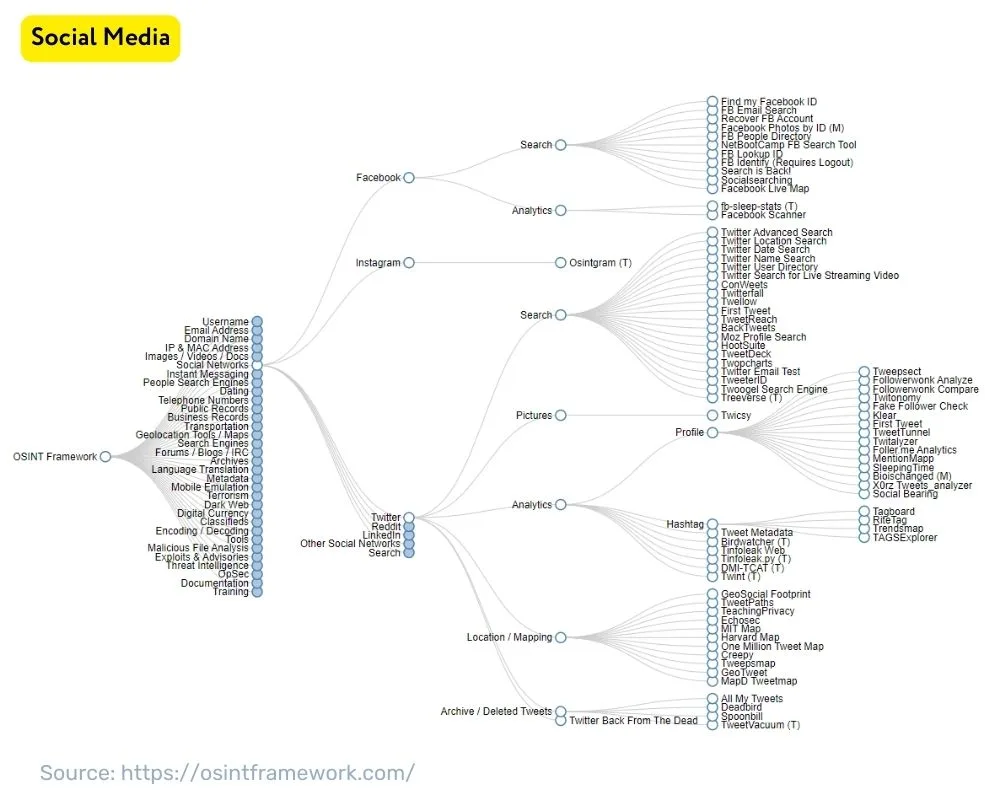
Applications of SOCMINT
SOCMINT has wide-ranging applications across various domains, offering significant benefits to different sectors:
Security and Law Enforcement
SOCMINT plays a crucial role in enhancing security and supporting law enforcement activities. Key applications include:
- Threat Detection: Identifying potential threats, including terrorist activities, criminal behaviour, and public safety risks, by monitoring social media chatter.
- Incident Response: Gathering intelligence during crises or emergencies to aid in effective response and resource allocation.
- Investigative Support: Assisting in criminal investigations by uncovering connections, tracking suspects, and gathering evidence from social media platforms.
Marketing and Brand Management
For businesses, SOCMINT is an invaluable tool for marketing and brand management:
- Brand Monitoring: Tracking brand mentions, customer feedback, and public sentiment to manage reputation and respond to issues promptly.
- Market Research: Understanding consumer behaviour, preferences, and trends through social media analysis.
- Competitive Analysis: Monitoring competitors’ activities and strategies to inform business decisions and identify opportunities.
Political and Social Research
Researchers and analysts use SOCMINT to gain insights into political and social dynamics:
- Public Opinion Analysis: Gauging public opinion on political issues, candidates, and policies through sentiment analysis.
- Campaign Monitoring: Tracking the effectiveness and reception of political or social campaigns.
- Social Movement Insights: Understanding the growth and impact of social movements and grassroots initiatives.
Corporate Intelligence
Corporations leverage SOCMINT for strategic advantage and risk management:
- Competitive Intelligence: Monitoring competitors’ social media activities, product launches, and marketing strategies.
- Employee Sentiment Analysis: Analysing employee sentiments and interactions to improve workplace culture and identify potential issues.
- Market Trends: Identifying emerging market trends and consumer demands to guide product development and marketing strategies.
Ethical Considerations and Challenges in SOCMINT
While SOCMINT offers significant benefits, it also raises ethical and legal concerns that must be carefully managed:
Privacy Concerns
- Respect for Privacy: SOCMINT practitioners must respect user privacy by only collecting and analysing publicly available information.
- Data Anonymisation: Techniques should be employed to anonymise data, protecting individual identities and sensitive information.
Legal Compliance
- Regulatory Adherence: Compliance with data protection laws and regulations, such as the General Data Protection Regulation (GDPR), is essential.
- Terms of Service: Ensuring that SOCMINT activities do not violate the terms of service of social media platforms.
Data Accuracy and Bias
- Verification: Cross-referencing data from multiple sources to ensure accuracy and reliability.
- Bias Mitigation: Being aware of and addressing biases in data collection and analysis processes to avoid skewed results.
Social Media Intelligence (SOCMINT) is a powerful tool that, when used ethically and responsibly, can provide profound insights across various fields. Understanding its components, applications, and challenges is crucial for practitioners aiming to leverage social media data for actionable intelligence. By adhering to ethical guidelines and employing robust tools and techniques, SOCMINT can be effectively harnessed to meet the diverse needs of security, marketing, research, and corporate intelligence.
Platforms for Social Media OSINT
Social media platforms are indispensable for OSINT investigations due to the vast amount of publicly accessible information they offer. Here, we delve into the specifics of key social media platforms, highlighting their unique features and the types of data they provide, which can be leveraged for intelligence gathering.
Facebook OSINT
User Profiles
- Overview: User profiles on Facebook contain a wealth of personal information, including names, birthdates, educational background, employment history, relationship status, and contact information. Users often share life events, photos, and personal interests.
- OSINT Application: By analysing user profiles, investigators can gather critical information about a person’s identity, background, and social connections. This can help in verifying identities, tracking individuals, and understanding their personal and professional networks.
Public Posts and Comments
- Overview: Facebook users post updates, share articles, and engage in discussions on their timelines, which can be visible to the public depending on privacy settings.
- OSINT Application: Public posts and comments can reveal a person’s opinions, activities, and interactions. By monitoring these, investigators can gain insights into a subject’s behaviour, interests, and potential affiliations. Comments on public posts can also help identify associates and collaborators.
Groups and Pages
- Overview: Facebook groups and pages are thematic spaces where users gather to discuss shared interests, organise events, or promote businesses and causes.
- OSINT Application: Investigators can join and monitor public groups to gather intelligence on specific topics or communities. Analysing posts and membership lists can provide insights into group dynamics, influential members, and emerging trends within a community.
Twitter OSINT
Tweets
- Overview: Tweets are brief messages (up to 280 characters) that can include text, hashtags, mentions, and media (images, videos, and links). They are public by default and can be indexed by search engines.
- OSINT Application: By searching and analysing tweets, investigators can track real-time discussions, sentiments, and events. Tweets can reveal personal views, public statements, and real-time reactions to ongoing events. They are particularly useful for monitoring breaking news and crisis situations.
User Profiles
- Overview: Twitter profiles contain basic user information such as usernames, bios, locations, and follower/following counts. The bios often include personal descriptions, affiliations, and links to other social media accounts or websites.
- OSINT Application: Analysing user profiles can help investigators understand the identity and influence of a Twitter user. Follower and following lists can reveal social networks and connections, while profile bios can provide clues about personal interests and affiliations.
Hashtags and Trends
- Overview: Hashtags are keywords or phrases preceded by a hash (#) symbol, used to categorise tweets and participate in larger conversations. Trends are popular topics or hashtags that gain widespread attention on the platform.
- OSINT Application: Monitoring hashtags and trends can help investigators identify popular discussions, track the spread of information, and gauge public sentiment. Hashtags are useful for tracking specific events, campaigns, or movements, while trends provide a snapshot of what is currently significant on the platform.
LinkedIn OSINT
Professional Profiles
- Overview: LinkedIn profiles are detailed professional resumes that include work experience, education, skills, endorsements, recommendations, and professional affiliations. Users often connect with colleagues, mentors, and industry leaders.
- OSINT Application: Investigators can use LinkedIn to verify professional backgrounds, understand career trajectories, and identify connections within industries or organisations. Endorsements and recommendations can also provide insights into a person’s reputation and expertise.
Company Pages
- Overview: Company pages on LinkedIn provide information about businesses, including company overviews, employee lists, job postings, and company updates.
- OSINT Application: Analysing company pages can help investigators understand organisational structures, identify key personnel, and monitor corporate activities. Job postings can also offer insights into a company’s strategic directions and upcoming projects.
Instagram OSINT
Photos and Videos
- Overview: Instagram is a visual-centric platform where users share photos and videos, often accompanied by captions, hashtags, and location tags. Posts can be public or private, depending on user settings.
- OSINT Application: Investigators can analyse photos and videos to gather visual evidence, track locations, and understand user activities. Hashtags and captions provide context, while geotags can help pinpoint physical locations and movements.
Stories and Highlights
- Overview: Instagram Stories are temporary posts that disappear after 24 hours, while Highlights are collections of Stories saved to a user’s profile. Both can include photos, videos, text, and interactive elements.
- OSINT Application: Stories and Highlights can offer real-time insights into user activities and events. Monitoring these can help investigators capture transient information and understand daily routines or ongoing events.
Hashtags and Locations
- Overview: Hashtags categorise posts around themes or topics, while location tags indicate where a photo or video was taken.
- OSINT Application: Tracking hashtags can reveal trends and popular discussions, while location tags can provide geospatial intelligence. Investigators can use this data to track user movements and identify hotspots for specific activities.
YouTube OSINT
Videos
- Overview: YouTube hosts a vast array of user-generated videos, from personal vlogs to professional content. Each video includes a title, description, tags, comments, and metadata such as upload date and view count.
- OSINT Application: Analysing YouTube videos can provide insights into user interests, opinions, and behaviours. Comments and engagement metrics (likes, shares) can further enhance understanding of audience reactions and community dynamics.
Channels and Subscriptions
- Overview: YouTube channels are user profiles dedicated to hosting videos. Subscribers are users who follow a channel to receive updates on new content.
- OSINT Application: Investigators can analyse channel content to understand a user’s influence and reach. Subscriber lists and engagement levels offer insights into audience demographics and interests.
Reddit OSINT
Subreddits
- Overview: Subreddits are thematic communities within Reddit, each focused on a specific topic or interest. They are moderated by community members and can range from general topics to highly specialised niches.
- OSINT Application: Subreddits provide concentrated sources of discussion and information on specific subjects. By monitoring relevant subreddits, investigators can gather detailed insights and opinions from dedicated communities.
Posts and Comments
- Overview: Reddit posts can include text, links, images, and videos, while comments provide a platform for user discussions and interactions.
- OSINT Application: Analysing posts and comments can help investigators understand community sentiments, track discussions, and identify influential members. The upvote/downvote system can also indicate the popularity and relevance of content within a community.
Importance of this Social Media Platforms in OSINT Investigation
Each social media platform offers unique types of data and insights, making them valuable for different aspects of OSINT investigations. Here’s a summary of their importance:
- Facebook: Ideal for personal information, social connections, and group dynamics. It provides comprehensive profiles and rich interaction data.
- Twitter: Excellent for real-time information, trend analysis, and public sentiment. It’s particularly useful for tracking events and crises as they unfold.
- LinkedIn: Best for professional backgrounds, organisational structures, and industry connections. It’s crucial for corporate and employment-related investigations.
- Instagram: Valuable for visual evidence, location tracking, and understanding lifestyle and activities. It’s useful for analysing user-generated visual content.
- YouTube: Important for understanding user interests, influence, and community engagement through video content. It’s key for analysing multimedia content and audience interactions.
- Reddit: Useful for deep dives into specific topics and understanding niche communities. It’s valuable for gathering detailed discussions and community insights.
By using these platforms effectively, OSINT investigators can gather comprehensive and actionable intelligence to support their investigative goals.
Techniques for Effective Social Media OSINT
Analyse, collect, visualize Facebook, LinkedIn, Twitter, Pinterest, Reddit, Snapchat, Instagram using open source tools.
In the Open Source Intelligence (OSINT) techniques, the efficacy of investigations hinges upon the adeptness with which data is gathered, analysed, and interpreted.
Here, we delve into a comprehensive array of strategies tailored to ensure the precision and thoroughness of OSINT investigation techniques.
Social Media Profile Analysis
In the dynamic landscape of social media, profiles serve as digital footprints, harbouring a trove of valuable insights. Profile analysis involves scrutinising user information, activity patterns, and connections to glean pertinent details. To enhance the accuracy of findings, employing cross-verification techniques is imperative.
Cross-Verification Techniques:
Cross-verification stands as a cornerstone of robust OSINT investigations. By corroborating information obtained from multiple sources, investigators mitigate the risk of erroneous conclusions and elevate the reliability of findings. This method entails cross-referencing data from disparate platforms, public records, and credible sources to ascertain its veracity.
Image Verification Methods:
In an era rampant with digital manipulation, image verification emerges as a critical facet of OSINT investigations. Employing reverse image search tools such as TinEye or Google Images aids in discerning the authenticity of visuals, uncovering instances of image reuse or fabrication. Additionally, leveraging metadata analysis tools like ExifTool facilitates the extraction of metadata embedded within images, unveiling valuable details pertaining to their origin and authenticity.
Social Media Content Monitoring
Monitoring the expansive deluge of content pervading social media necessitates astute vigilance and adept utilisation of monitoring tools. By harnessing keyword and hashtag tracking mechanisms, investigators can sieve through the vast expanse of social media discourse to pinpoint pertinent information and emerging trends.
Keyword and Hashtag Tracking:
Keywords and hashtags serve as conduits to pertinent information within the labyrinthine maze of social media. By judiciously selecting and tracking relevant keywords and hashtags, investigators can streamline their search efforts, honing in on content germane to their investigative purview. Tools like Social-Searcher and Hootsuite offer sophisticated capabilities for real-time monitoring of keyword and hashtag usage across multiple platforms.
Sentiment Analysis Tools and Techniques:
Deciphering the sentiment underlying social media discourse furnishes investigators with invaluable insights into prevailing attitudes and public opinion. Leveraging sentiment analysis tools such as Lexalytics or Sentiment140 enables the classification of textual content based on its emotional tone, facilitating the identification of sentiments ranging from positive to negative and neutral.
Social Media Geolocation
The spatial dimension embedded within social media content holds profound implications for OSINT investigations. Geolocation techniques empower investigators to discern the physical locations associated with posts, images, and videos, augmenting the depth and contextuality of gleaned intelligence.
Geotagged Posts:
Posts adorned with geolocation tags provide a tangible anchor to specific geographical coordinates, affording investigators a tangible nexus to real-world locations. By parsing through geotagged posts, investigators can discern patterns, identify hotspots, and unravel spatially contextualised insights pertinent to their investigative objectives.
Metadata Extraction from Images:
The metadata enshrined within digital images serves as a veritable treasure trove of contextual information, encompassing details such as GPS coordinates, date and time stamps, and device specifications. Leveraging metadata extraction tools like ExifTool facilitates the extraction and analysis of metadata embedded within images, furnishing investigators with a nuanced understanding of their provenance and context.
Social Media Network Analysis
At the crux of social media lies a labyrinthine network of connections and interactions, ripe for exploration and analysis. Network analysis techniques enable investigators to unravel intricate webs of relationships, delineating affiliations, influence dynamics, and communication channels.
Relationship Mapping Tools:
Visualising relationships and connections forms the linchpin of network analysis endeavours. Tools like Maltego and Gephi empower investigators to construct visual representations of networks, illuminating the interplay between individuals, entities, and communities. Through meticulous relationship mapping, investigators unearth hidden connections and delineate the contours of influential networks.
Interaction Analysis:
Delving beyond the static contours of profiles and connections, interaction analysis delves into the dynamic realm of engagements and discourse. By scrutinising likes, comments, and shares, investigators discern patterns of interaction, identify key influencers, and glean insights into prevailing sentiment and discourse dynamics.
Social Media Data Archiving and Documentation
In the labyrinthine landscape of OSINT investigations, the adage “knowledge is power” rings resoundingly true. To safeguard against the ephemeral nature of digital content and facilitate seamless knowledge transfer, robust data archiving and documentation practices are indispensable.
Using Archival Tools:
Archival tools serve as bulwarks against the transient nature of digital content, preserving snapshots of social media discourse for posterity. Platforms like Archive.org and ArchiveBox facilitate the systematic archiving of web pages and social media content, enabling investigators to preserve crucial artefacts and maintain a comprehensive repository of historical data.
Maintaining Detailed Records:
Documentation stands as the bedrock of effective OSINT investigations, facilitating the replication of methodologies, the validation of findings, and the dissemination of insights. By maintaining meticulous records of data sources, methodologies, and findings, investigators bolster the transparency, reproducibility, and credibility of their investigative endeavours.
Advanced Techniques for Social Media OSINT
Advanced OSINT techniques involve leveraging multiple platforms, AI and machine learning, sentiment analysis, predictive analytics, automation tools, APIs, custom scripts, and workflow automation for more comprehensive and efficient intelligence gathering. Let’s delve into each of these aspects:
1. Combining Data from Multiple Platforms
- Cross-Platform Analysis: Integrating data from various sources, such as social media, forums, blogs, news sites, and public records, provides a more holistic view of the subject.
- Link Analysis: Identifying relationships and connections between different data points across platforms can reveal hidden patterns and networks.
2. Using AI and Machine Learning in OSINT
- Natural Language Processing (NLP): AI algorithms can process and understand human language, enabling tasks like sentiment analysis, entity recognition, and topic modelling.
- Image Recognition: Machine learning models can analyse images to identify objects, faces, logos, and locations, facilitating visual OSINT.
- Anomaly Detection: AI can detect unusual patterns or behaviours in data, helping to flag potentially significant findings for further investigation.
3. Sentiment Analysis
- Understanding Public Opinion: Sentiment analysis algorithms gauge the sentiment expressed in text data, helping to understand public perceptions, attitudes, and emotions towards a topic.
- Brand Monitoring: Monitoring sentiment towards a brand or product on social media can inform marketing strategies and reputation management efforts.
4. Predictive Analytics
- Forecasting Trends: By analysing historical data and identifying patterns, predictive analytics can forecast future events or trends, aiding in proactive decision-making.
- Risk Assessment: Predictive models can assess the likelihood of various outcomes, helping to mitigate risks and plan accordingly.
5. Automation Tools for OSINT
- Web Scraping: Automated tools can extract data from websites and social media platforms, saving time and effort in data collection.
- Alert Systems: Automation can be used to set up alerts for specific keywords, mentions, or events, ensuring timely updates on relevant information.
6. APIs and Custom Scripts
- Accessing Data: APIs provide programmatic access to data from various platforms, allowing for customised data retrieval and analysis.
- Custom Scripts: Tailored scripts can automate specific OSINT tasks, such as data extraction, analysis, and reporting, based on unique requirements.
7. Workflow Automation Tools (e.g., Zapier, IFTTT)
- Streamlining Processes: Workflow automation tools integrate different applications and services, enabling seamless data flow and task automation.
- Trigger-Based Actions: Actions can be triggered based on predefined criteria, automating repetitive tasks and improving efficiency.
Advanced OSINT techniques leverage a combination of technology, automation, and analytical methods to enhance the effectiveness and efficiency of intelligence gathering and analysis. By integrating data from multiple platforms, harnessing AI and machine learning capabilities, performing sentiment analysis, predictive analytics, and leveraging automation tools, OSINT practitioners can uncover valuable insights and make informed decisions in various domains, from security and law enforcement to business intelligence and beyond.
Ethical and Legal Considerations in Social Media OSINT Sources
Ethical and legal considerations are foundational pillars of responsible and effective OSINT practices, particularly within the realm of social media intelligence. By prioritising user privacy, adhering to legal requirements, and mitigating bias, OSINT practitioners can uphold the integrity of their investigative activities while safeguarding individual rights and promoting trust within the online community. As the landscape of social media continues to evolve, maintaining ethical standards and legal compliance remains imperative to the credibility and sustainability of OSINT initiatives.
Privacy Concerns and Data Protection
In the era of digital interconnectedness, privacy has become a paramount concern. As OSINT analysts, it is incumbent upon us to uphold the privacy rights of individuals whose data we access. This entails exercising caution when collecting, processing, and disseminating personal information obtained from social media platforms. Respecting user privacy involves obtaining consent where necessary, anonymising sensitive data, and refraining from intrusive or unethical data mining practices.
Respecting User Privacy
Respecting user privacy entails recognising and honouring individuals’ rights to control their personal information. This involves obtaining explicit consent before collecting or using any personal data for OSINT purposes. Moreover, it requires transparency in informing users about the nature and purpose of data collection activities. By adopting a user-centric approach, OSINT practitioners can foster trust and goodwill within the online community while safeguarding individual privacy rights.
Data Anonymisation Techniques
Anonymisation techniques are instrumental in safeguarding the anonymity and privacy of individuals whose data is collected for OSINT investigations. This involves removing or encrypting personally identifiable information (PII) from datasets to prevent the identification of specific individuals. Common anonymisation methods include pseudonymisation, data aggregation, and randomisation. By implementing robust anonymisation measures, OSINT analysts can mitigate the risk of unintentional disclosure and uphold the privacy rights of data subjects.
Legal Compliance in OSINT
Compliance with legal and regulatory frameworks is non-negotiable in the realm of OSINT. OSINT practitioners must familiarise themselves with relevant laws, directives, and guidelines governing data privacy, intellectual property rights, and information security. This includes adherence to legislation such as the General Data Protection Regulation (GDPR), Data Protection Act 2018 (UK), and the Computer Misuse Act 1990 (UK). By ensuring strict compliance with legal requirements, OSINT professionals can mitigate legal risks and uphold the rule of law in their investigative activities.
Regulatory Adherence
Regulatory adherence encompasses compliance with industry-specific regulations and guidelines governing OSINT practices. This involves adhering to sector-specific codes of conduct, professional standards, and best practices endorsed by regulatory bodies and industry associations. OSINT analysts operating within regulated industries such as law enforcement, financial services, and healthcare must align their practices with sector-specific compliance requirements to avoid regulatory scrutiny and potential sanctions.
Compliance with Platform Terms of Service
Social media platforms impose terms of service (ToS) that govern the use of their services and the access to user-generated content. OSINT practitioners must adhere to these ToS to avoid violating platform rules and risking account suspension or legal repercussions. This entails refraining from activities such as unauthorised data scraping, automated bot interactions, and deceptive practices that contravene platform guidelines. By respecting platform ToS, OSINT professionals can maintain access to valuable data sources while fostering positive relationships with platform providers.
Mitigating Bias and Ensuring Data Accuracy
Bias mitigation and data accuracy are essential considerations in OSINT investigations to ensure the reliability and credibility of findings. OSINT analysts must be vigilant in identifying and mitigating biases that may skew their analysis or interpretation of data. This includes acknowledging and addressing inherent biases in data sources, sampling methods, and analytical techniques. Moreover, practitioners must employ rigorous verification methods to validate the accuracy and authenticity of information obtained from social media platforms. By upholding principles of objectivity and integrity, OSINT professionals can produce reliable insights that withstand scrutiny and support informed decision-making.
Verification Methods
Verification methods are integral to the OSINT process, enabling analysts to assess the credibility and accuracy of information obtained from social media sources. Common verification techniques include cross-referencing information across multiple sources, verifying the credentials and reliability of sources, and corroborating data through independent verification. Additionally, OSINT analysts may utilise specialised tools and techniques such as digital forensics, metadata analysis, and geolocation verification to validate the authenticity of data. By employing robust verification methods, OSINT practitioners can mitigate the risk of misinformation and ensure the integrity of their investigative findings.
Handling Bias in Data Collection and Analysis
Bias in data collection and analysis can undermine the objectivity and reliability of OSINT investigations. OSINT analysts must be cognisant of potential biases stemming from factors such as sample selection, data interpretation, and personal biases. To mitigate bias, practitioners should employ diverse data collection methods, utilise representative sampling techniques, and maintain transparency in their analytical approach. Additionally, fostering a culture of critical thinking and reflexivity within OSINT teams can help mitigate the influence of subjective biases on data analysis and decision-making processes. By proactively addressing bias, OSINT professionals can enhance the validity and credibility of their investigative outcomes.
Future Trends in Social Media OSINT
As technology advances and social media platforms evolve, the landscape of Open Source Intelligence (OSINT) is continuously evolving. Understanding future trends is essential for OSINT practitioners to stay ahead of the curve and adapt their strategies accordingly.
Emerging Technologies and Their Impact on OSINT
AI and Big Data
Artificial Intelligence (AI) and Big Data analytics are revolutionising the field of OSINT by enabling faster, more efficient data processing and analysis. AI algorithms can sift through vast amounts of social media data to identify patterns, trends, and anomalies, enhancing the accuracy and reliability of OSINT findings. Moreover, Big Data technologies empower analysts to extract actionable insights from large and diverse datasets, facilitating more comprehensive and insightful investigations.
Enhanced Analytics and Visualisation Tools
Advancements in analytics and visualisation tools are empowering OSINT practitioners to extract meaningful insights from social media data. Interactive visualisation platforms enable analysts to explore complex networks, identify key relationships, and uncover hidden connections within social media data. These tools facilitate data-driven decision-making and enhance the effectiveness of OSINT investigations.
Evolution of Social Media Platforms
New Platforms and Features
The rapid proliferation of new social media platforms and features presents both opportunities and challenges for OSINT practitioners. Emerging platforms offer access to novel sources of information and unique user demographics, expanding the scope of OSINT investigations. However, the constantly evolving nature of social media introduces complexities in data collection, analysis, and verification. OSINT professionals must stay abreast of new platforms and features to effectively navigate this dynamic landscape.
Changes in User Behaviour and Content Types
Shifts in user behaviour and content types on social media platforms influence the nature and scope of OSINT investigations. The rise of ephemeral content, such as stories and disappearing messages, presents challenges in data preservation and analysis. Moreover, changes in user privacy settings and engagement patterns necessitate adaptation in OSINT strategies and methodologies. By understanding evolving user behaviours and content trends, OSINT practitioners can better anticipate and address emerging challenges in social media intelligence.
Preparing for the Future of OSINT
Continuous Learning and Adaptation
Continuous learning and adaptation are critical for staying abreast of evolving trends and technologies in social media OSINT. OSINT practitioners must actively engage in professional development activities, such as training workshops, conferences, and online courses, to enhance their skills and expertise. Moreover, fostering a culture of innovation and experimentation within OSINT teams enables organisations to leverage emerging technologies and methodologies effectively.
Building a Robust OSINT Strategy
A well-defined strategy ensures that intelligence efforts are focused, systematic, and aligned with organisational objectives. Here’s a comprehensive approach to building a robust OSINT strategy:
Building an Effective OSINT Framework
Setting Objectives and Goals
Setting clear objectives and goals is the foundation of an effective OSINT framework. Define the purpose and scope of the investigation, identify specific objectives, and establish measurable goals to guide the OSINT process.
Identifying Relevant Sources and Tools
Identifying relevant sources and tools is essential for gathering actionable intelligence from social media platforms. Conduct a comprehensive assessment of available data sources, including social media platforms, online forums, and public databases. Select appropriate tools and technologies to collect, analyse, and visualise data effectively.
Developing a Workflow and Methodology
Developing a structured workflow and methodology streamlines the OSINT process and ensures consistency and efficiency in investigations. Define clear roles and responsibilities, establish data collection protocols, and document standard operating procedures to guide analysts through each stage of the investigation.
Ensuring Collaboration and Communication
Effective collaboration and communication are essential for success in OSINT investigations. Foster a culture of collaboration within OSINT teams, encourage knowledge sharing and information exchange, and leverage collaboration tools and platforms to facilitate seamless communication and coordination.
Measuring Success and Continuous Improvement
Measuring success and continuous improvement are critical for refining and enhancing OSINT capabilities over time. Define key performance indicators (KPIs) to evaluate the effectiveness and impact of OSINT initiatives. Collect feedback from stakeholders, analyse performance metrics, and iterate on strategies to drive continuous improvement and innovation in social media OSINT practices.
Manage Business Risk with OSINT.
Neotas is an Enhanced Due Diligence Platform that leverages AI to join the dots between Corporate Records, Adverse Media and Open Source Intelligence (OSINT).
Extract, analyse, and visualise data from social media. Speed up your investigations with social media intelligence data.
Schedule a Call or Book a Demo of Neotas Enhanced Due Diligence Platform.
Read More about Open Source Intelligence:
- OSINT Framework, OSINT Tools, OSINT Techniques, and how to use OSINT framework.
- What is the OSINT Framework and how to use it?
- Open Source Intelligence (OSINT) in the Fight Against Financial Crime
- Reduce & Manage Business Risk with Neotas Open Source Intelligence (OSINT) Solutions
- Open Source Intelligence (OSINT) based AML Solution sees beneath the surface
- Enhancing ESG Risk Management Framework with Neotas’ OSINT Integration
- How Open Source Intelligence (OSINT) is transforming enhanced due diligence and investigations in AML compliance
- Detecting Modern Slavery In Your Supply Chain using Open-source Intelligence
- Creating an effective framework for managing risk with suppliers and third parties using open-source intelligence (OSINT)
- Third Party Risk Management (TPRM) Using OSINT
- Open-source Intelligence For Supply Chain – OSINT
- ESG Risk Management Framework with Neotas’ OSINT Integration
- Open Source Intelligence In AML Compliance | Case Study
- Identifying Difficult And Dangerous Senior Managers
- ESG Risk Investigation Uncovers Supply Chain Risks
- Financial Crime Compliance & Risk Management Trends
- Network Analysis Reveals International Links In Credit Risk Case
- Network Analysis and Due Diligence – Terrorist Financing
- Using OSINT For Sources Of Wealth Checks
- ESG Risks Uncovered In Investigation For Global Private …
- PEP Screening: Undisclosed Political Links Uncovered For European Organisation
- Risk-Based Approach (RBA) to AML & KYC risk management
- Anti-Money Laundering (AML)
- Supply Chain Risk Management
- Using Open Source Intelligence For Enhanced Due Diligence
FAQs on Social Media OSINT
What is social media intelligence?
Social media intelligence (SOCMINT) is the process of gathering, analysing, and interpreting data from social media platforms to extract actionable insights for various purposes, including security, marketing, and research.
What is social media OSINT?
Social Media OSINT (Open Source Intelligence) involves collecting, analysing, and interpreting publicly available information from social media platforms. It encompasses monitoring user-generated content, tracking trends, and extracting insights for various purposes such as security, investigations, marketing, and reputation management. Social Media OSINT aids in understanding online behaviours, sentiments, and interactions.
What are the four foundations of social media intelligence?
The four foundations of social media intelligence are data collection, data analysis, data interpretation, and actionable insights. These pillars form the basis for effective SOCMINT practices.
What is social data intelligence?
Social data intelligence refers to the systematic analysis and interpretation of data generated from social media platforms to derive meaningful insights and inform decision-making processes.
What is the role of social media in intelligence gathering?
Social media plays a crucial role in intelligence gathering by providing a vast repository of publicly available data that can be analysed to identify trends, sentiments, and patterns relevant to intelligence objectives.
What is an example of social media intelligence?
An example of social media intelligence is monitoring social media platforms for mentions of a brand to gauge public sentiment and identify emerging issues or opportunities for reputation management.
What are social intelligence tools?
Social intelligence tools are software applications or platforms designed to facilitate the collection, analysis, and interpretation of data from social media sources.
Who defined social intelligence?
The concept of social intelligence was defined by psychologist Edward Thorndike in the early 20th century as the ability to understand and manage interpersonal relationships effectively.
What is social intelligence work?
Social intelligence work refers to activities and practices aimed at improving interpersonal skills, emotional intelligence, and social awareness to navigate social interactions and relationships more effectively.
What type of intelligence is social?
Social intelligence pertains to the ability to understand, navigate, and influence social dynamics and relationships effectively. It encompasses interpersonal skills, emotional intelligence, and social awareness.
How is social intelligence measured?
Social intelligence can be measured through assessments and evaluations of interpersonal skills, emotional awareness, and social cognition. Psychometric tests, behavioural observations, and self-report measures are commonly used methods for measuring social intelligence.
How do you build social intelligence?
Building social intelligence involves developing interpersonal skills, enhancing emotional awareness, and cultivating social awareness through practice, reflection, and feedback. Engaging in active listening, empathy, and effective communication are key components of building social intelligence.
What are the social media techniques using OSINT?
Social media techniques using OSINT include advanced search methods, data scraping tools, sentiment analysis, geolocation tracking, network analysis, and content monitoring to gather and analyse information from social media platforms.
What is OSINT social intelligence?
OSINT social intelligence refers to the process of using open source intelligence techniques to gather, analyse, and interpret data from social media platforms to derive insights and inform decision-making processes.
Is social media open source intelligence?
Yes, social media is considered open source intelligence (OSINT) as it comprises publicly available information that can be accessed, analysed, and interpreted to extract intelligence for various purposes.
What is using social media for intelligence?
Using social media for intelligence involves leveraging social media platforms to gather, analyse, and interpret data to inform decision-making processes in various domains, including security, marketing, and research.
What are the 3 pillars of OSINT?
The three pillars of OSINT are data collection, analysis, and dissemination. These pillars form the foundation of OSINT practices, enabling the gathering, processing, and sharing of intelligence from open sources.
Is social media considered OSINT?
Yes, social media is considered a source of open source intelligence (OSINT) as it provides publicly available data that can be utilised for intelligence gathering and analysis purposes.
Which tool is used in OSINT?
Various tools are used in OSINT, including data scraping tools (e.g., Maltego, Social-Searcher), analytics platforms (e.g., Hootsuite, Brandwatch), and visualisation tools (e.g., Gephi, Tableau) to gather, analyse, and visualise intelligence from open sources.
Is Google an OSINT tool?
Google can be utilised as an OSINT tool for gathering information from open sources. Its search engine enables users to access a wide range of publicly available data, including websites, news articles, and social media content.

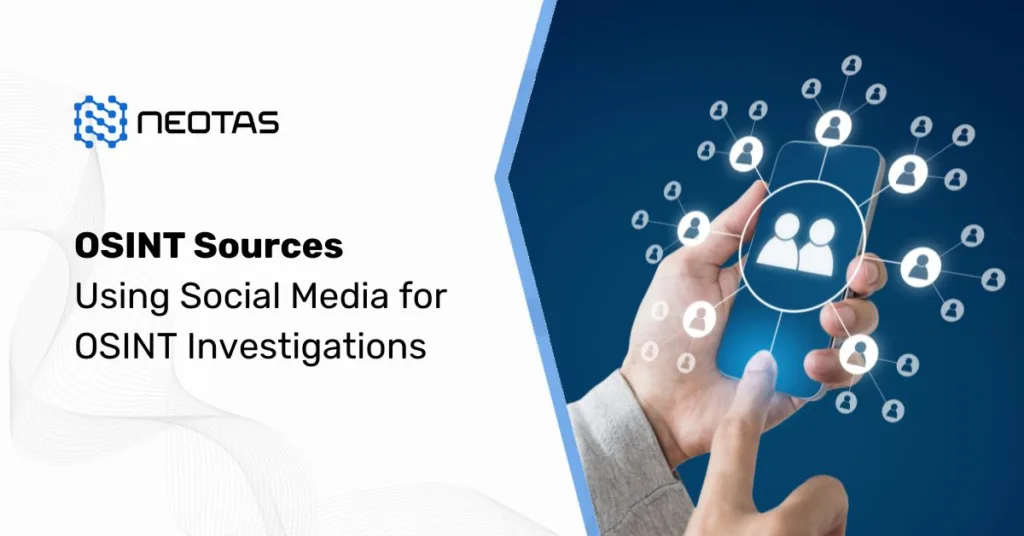

 New Whitepaper and Checklist
New Whitepaper and Checklist